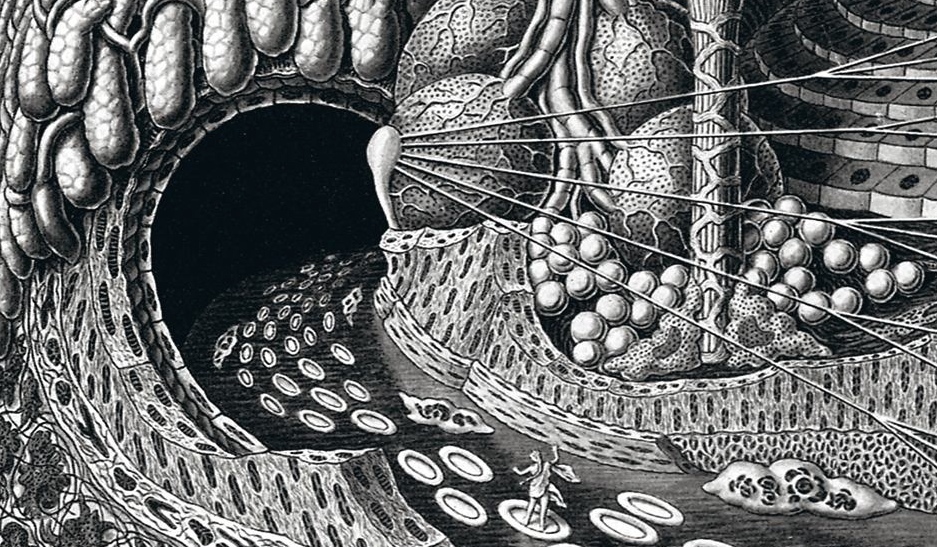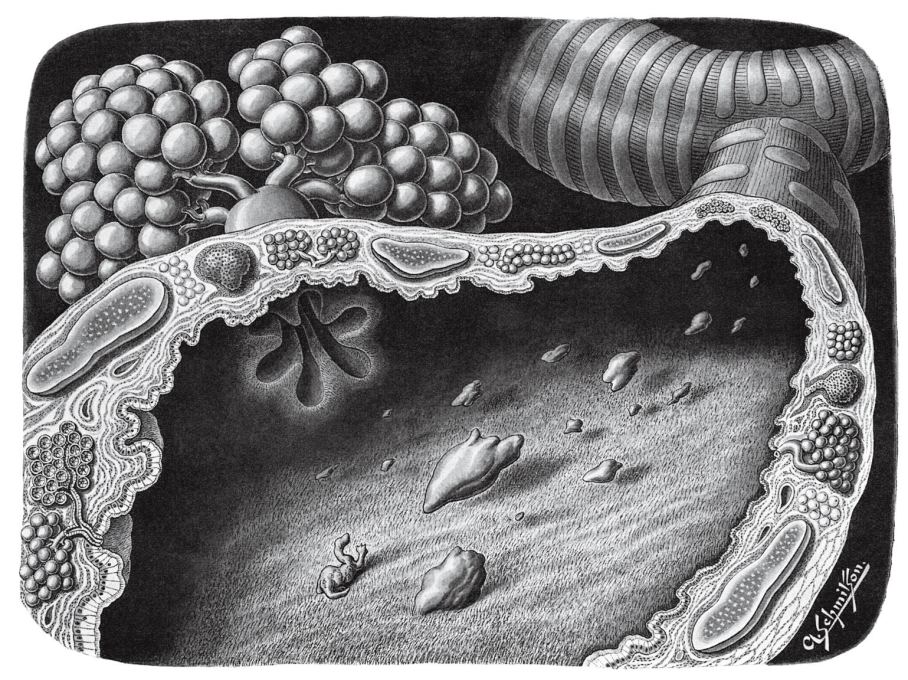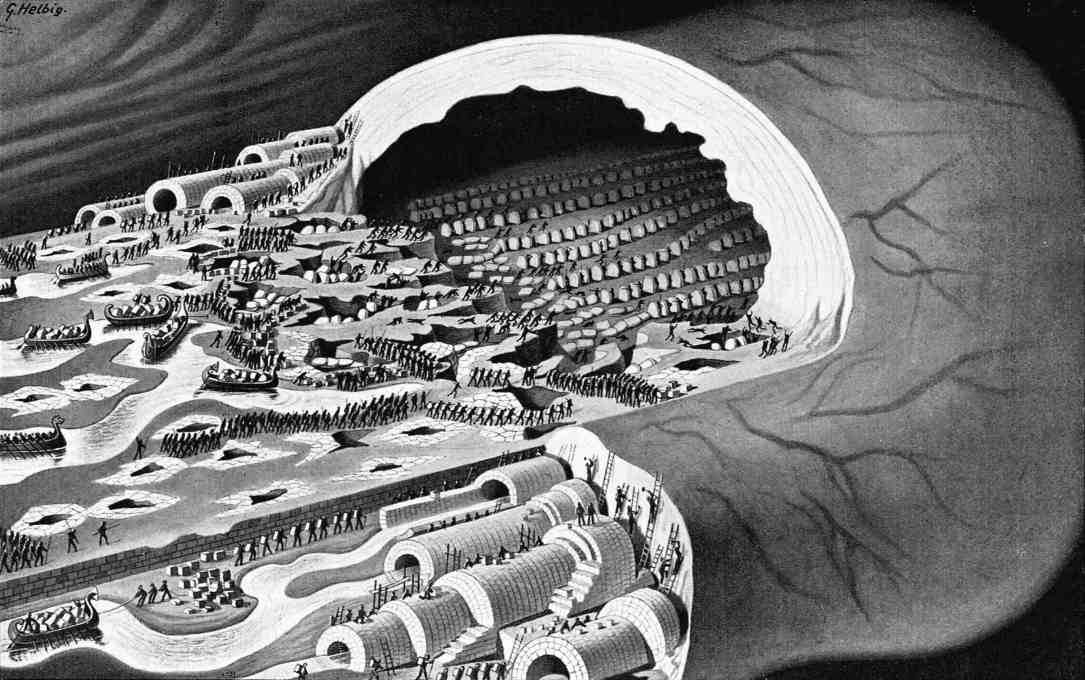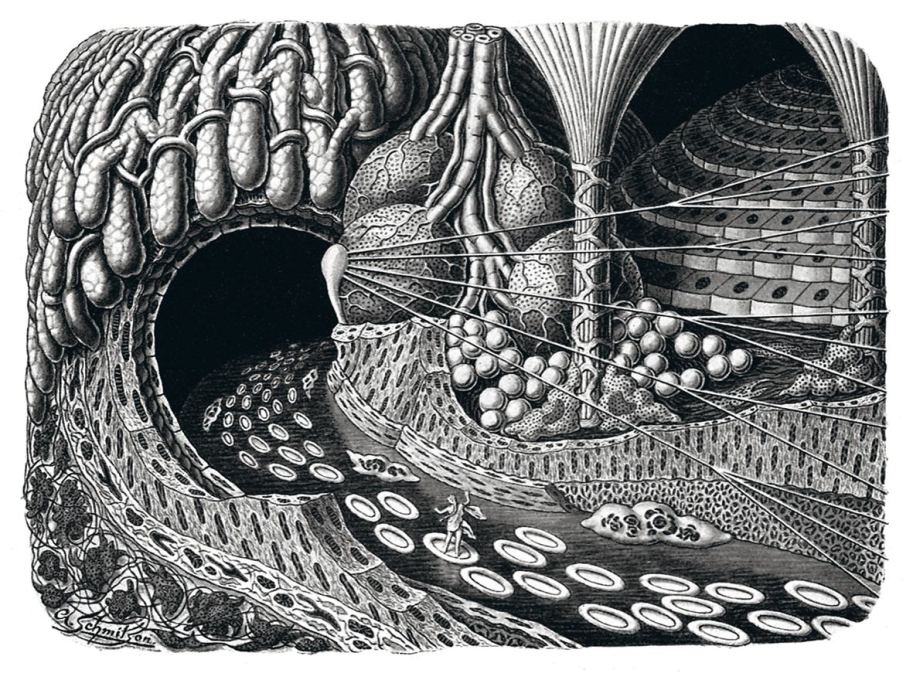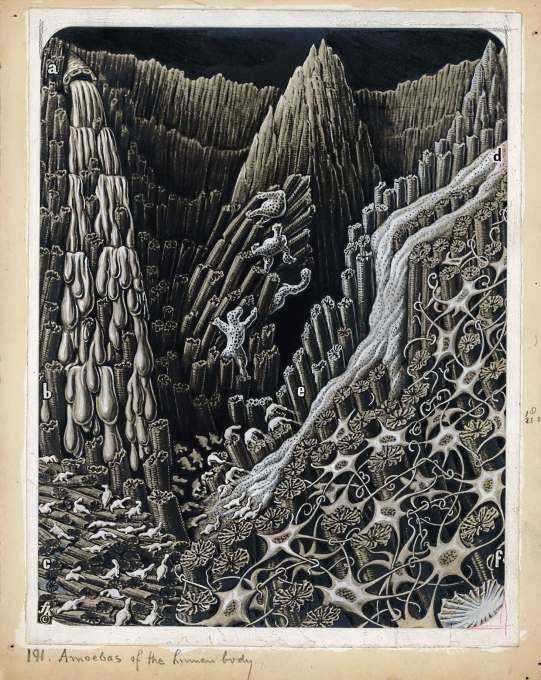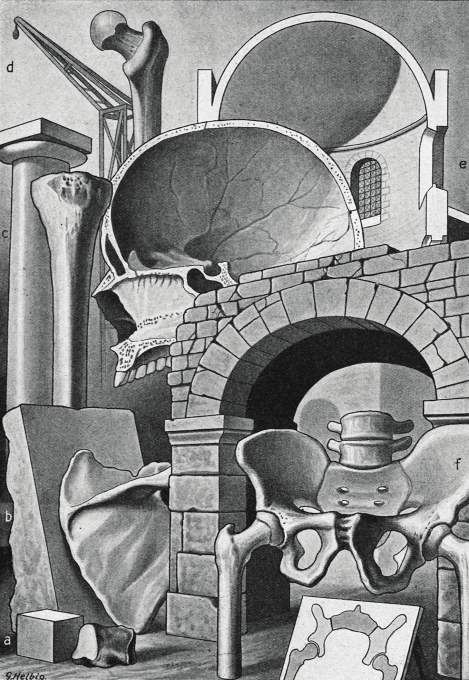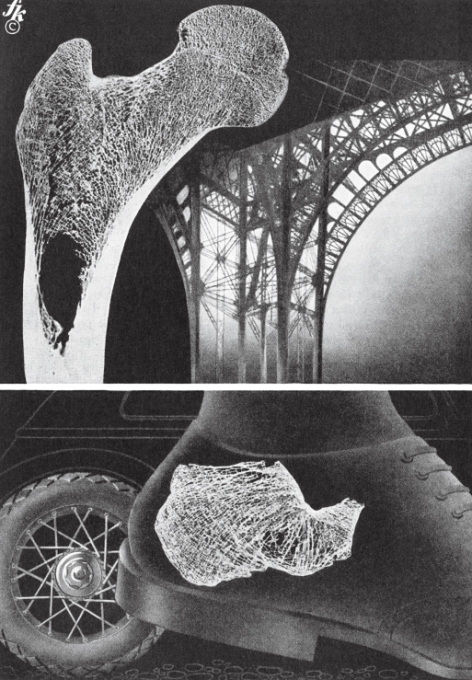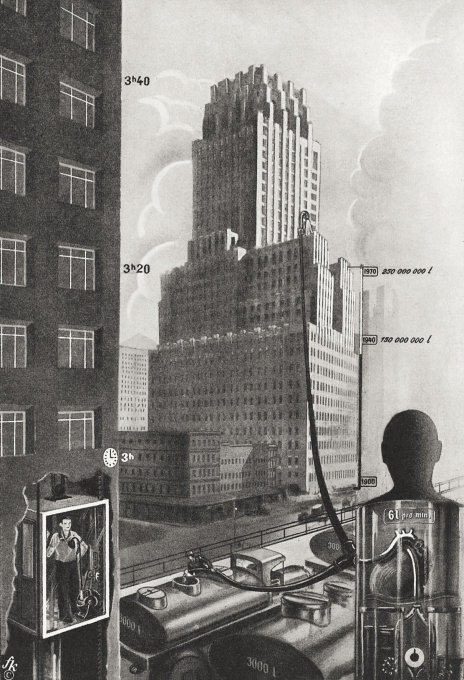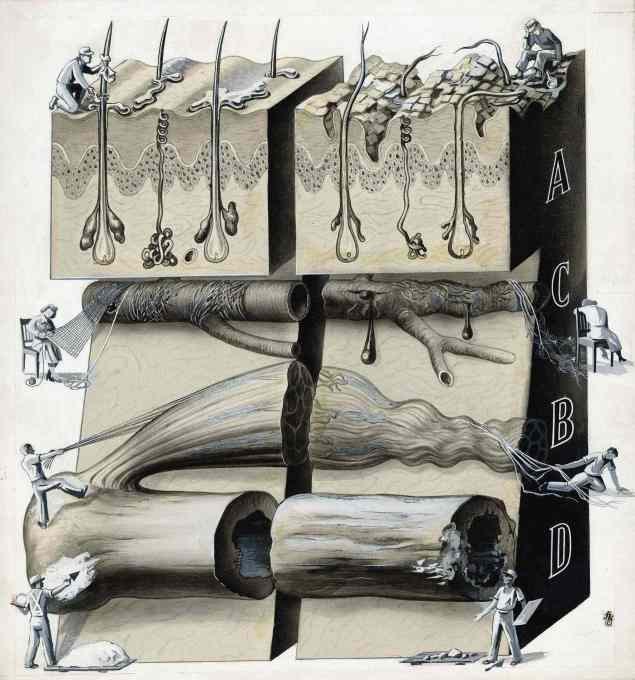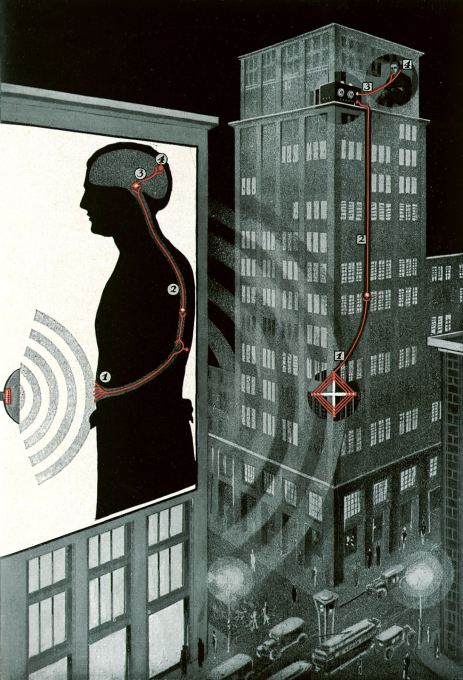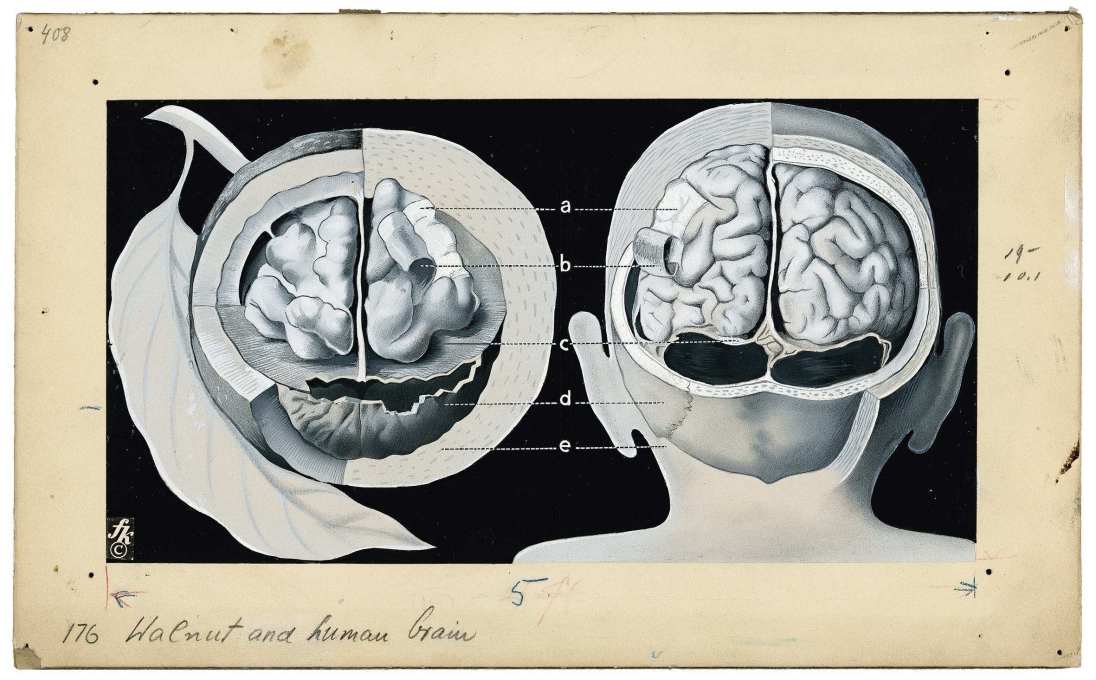With our current issue‚ Soft Machines‚ it seemed too good an opportunity to miss to revisit some of the extraordinary anatomical illustrations in the books of Fritz Kahn. His ambitious approach to his speculative drawings provided viewers with a different perspective in understanding science and the functions of the human body at the start of the twentieth century.
These meticulous visualisations illustrate biological processes of “the most competent machine in the world”: the human body. Kahn, a physician, commissioned and collaborated with freelance architects, painters and graphic designers in order to find the best possible way to picture and explain complex ideas and processes graphically. Seen as early precursors to the concept of the infographic, these works are still enormously influential today.
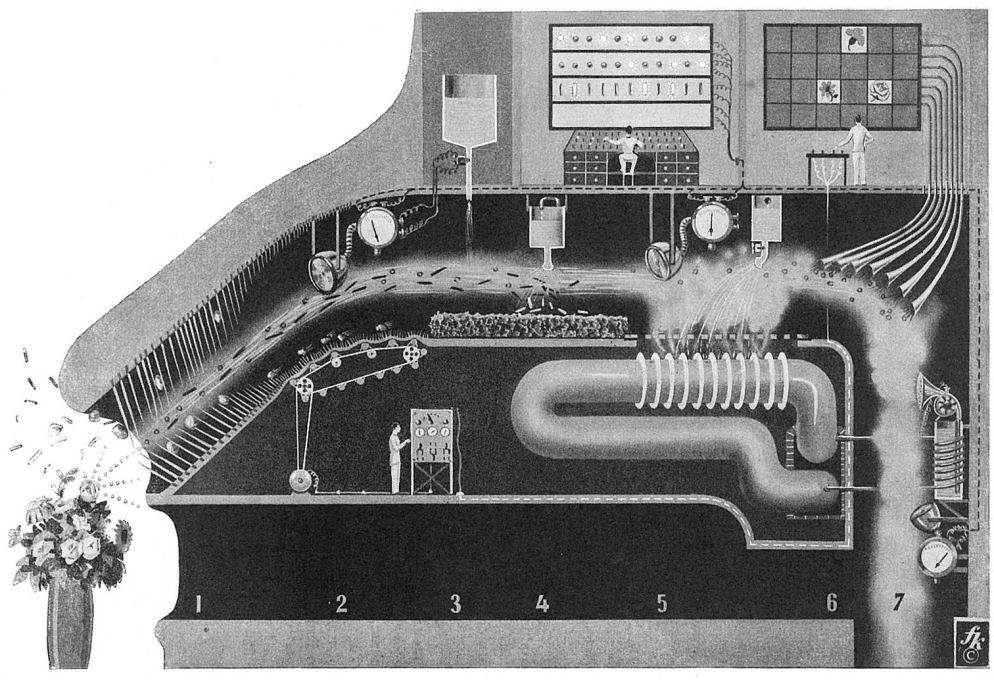
Fritz Kahn began his medical studies in 1907 at The University of Berlin, specialising in microbiology, whilst also working at a meteorological institute and initially writing articles for science magazine Kosmos. It wasn’t until after he worked as a surgeon, gynaecologist and obstetrical aide during the Weimar Republic that Kahn started pushing the illustrative boundaries. In the late 1930s, as he was Jewish, his books were judged “damaging and undesirable” in Germany, and his book on sexuality, Unser Geschlechtsleben was banned and burned. He himself escaped to France and later, with the help of Albert Einstein, to the USA. His vivid visual biological metaphors remained immensely popular internationally.
In 2013 siblings Uta and Thilo von Debschitz brought his work to new audiences, and reconceived Kahn’s biography and work in their book titled Fritz Kahn, aiming to reframe the life’s work of this once controversial man of illustration.
- Leigh Theodore Vlassis




